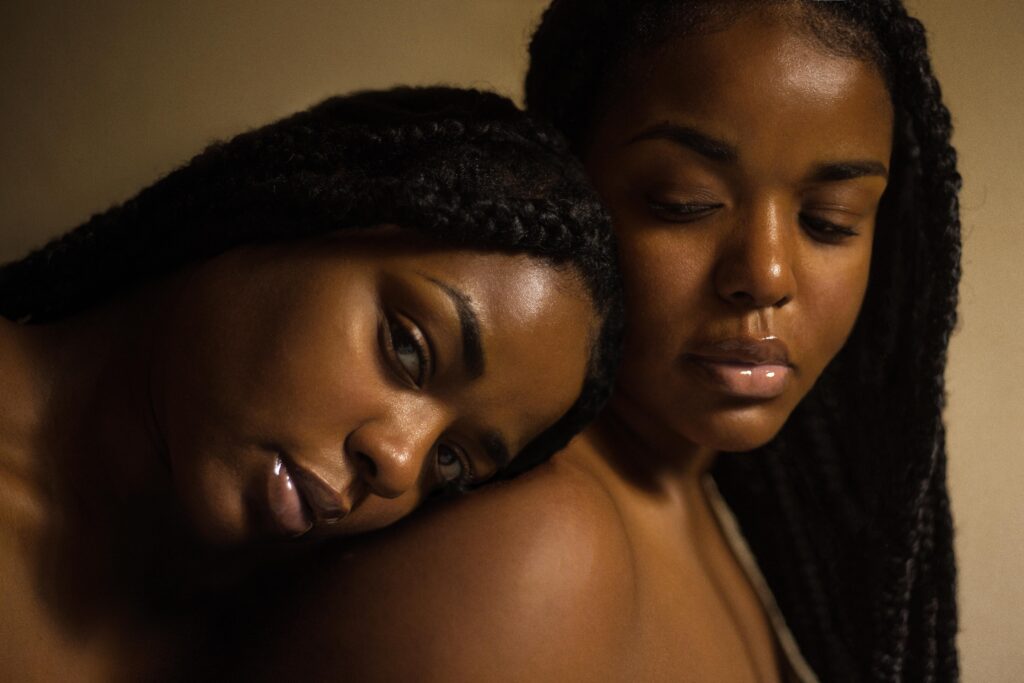News Team member Stephanie Oehler explore the rising popularity and benefits of HotWorx and other heated workouts, as well as the potential dangers of the trend without proper preparation.
5.
Black Women Get Eating Disorders, Too

By: Adaora Yvonne Ntukogu
Eating Disorders
Eating disorders are fatal illnesses associated with severe disturbances in people’s eating behaviors and related emotions. There are 2 main types of eating disorders, the restriction subtype (e.g. anorexia nervosa) and the binge-purge subtype (e.g. bulimia nervosa). The restriction subtype is characterized by fasting, dieting, and exercising. The binge-purge subtype is characterized by recurrent binge eating and/or purging behaviors. Common symptoms for eating disorders include extreme body dissatisfaction and disapproval.[1]
Eating disorders affect people of every race, ethnicity, sexuality, and gender and they develop due to a series of biological, psychological, and social factors specific to an individual. No scientific study has found an absence of eating disorders among black women. However, there is a stigma that only rich white girls get eating disorders and black women do not suffer from them. This stigma has developed because of several variables:
- The lack of understanding of the unique experiences of black womanhood
- The misrepresentation of black women in studies done on eating disorders as a result of comparing black women to standards made for white women
- The lack of representation of black women in clinics
Black women have unique experiences that should be recognized, studied, and valued. Without an understanding of the unique stressors black women endure, our glass will always be half empty.[2] Black women’s body image disturbances must be placed within a social and cultural context based on the intersections of gender and racial oppression. It is important to recognize how sexism and racism can affect the mental health of an individual. Belonging to multiple oppressed groups, while simultaneously navigating the world, is an experience all black women face. It is highly unlikely that this experience has no effect on how black women view their bodies.
Historical Context and Societal Pressures
We must acknowledge the historical context of racism and sexism, specifically, how stereotypes emerged to objectify the bodies of black women.[2] For example, black women have been stereotyped as a hard-working and respectful “mammy”. The “mammy” archetype is an obedient caretaker to a white family, usually depicted as a larger and older dark-skinned woman who is unattractive and asexual. Black women have also been characterized as the “Sapphire”, an aggressive and controlling woman. There is also the stereotype of the “Jezebel”, a sexually promiscuous and manipulative woman. More recently, the “strong black women” stereotype has emerged, depicting an independent black woman who is emotionally mute and self-sufficient. Historically, these stereotypes were designed to counter the notions of white womanhood (eg. sensitive, fragile, and ladylike). These one dimensional images were created to minimize black women to uncomplex caricatures.
Coupled with demeaning, racist, and sexist stereotypes, black women also face pressure from black and white culture. Black culture has its own beauty and body ideals. For example, colorism, a form of internalized racism, continues to infiltrate black culture. Colorism deems lighter skinned women with curlier hair textures (as opposed to darker women and women with kinkier hair textures), as the standard of beauty because of their proximity to whiteness.[2] A study examining the relationship between skin tone and body image among black women found that skin tone dissatisfaction was related to viewing darker skin as not aesthetically pleasing. White mainstream culture is deemed as the most appropriate and black women feel pressure to conform to these ideals in order to be treated with respect. Together, these systems of oppression and unique stressors may be potential risk factors for developing eating disorders.

Risk Factors
High levels of acculturation are associated with a larger risk of developing eating disorders. Acculturation is defined as the process of assimilating into a new, usually dominant, culture (i.e. white mainstream culture). Higher levels of acculturation leave black women more susceptible to internalized racism, characterized by low self esteem, self-hate, and deeming proximity to whiteness as exceptional.
Discrimination may also be a risk factor for black women developing eating disorders.[3] A study concluded that incidents of racial discrimination matter significantly for mental health because they are “experiences of exclusion that trigger feelings of being over-scrutinized, overlooked, underappreciated, misunderstood, and disrespected”.[3] A recent review documented that discrimination is positively associated with measures of depression and anxiety symptoms.
On top of individual stressors, black women (compared to white women) are exposed to more deaths of friends, family, and community members from early childhood and throughout their life course.[3] This elevated rate of social loss is a unique stressor that negatively impacts mental health across the life course. Elevated incarceration rates, as a result of systemic racism, have negative effects on the mental health of families and communities, of which black women are an integral component. The hypervisibility of police brutality (eg. videos on social media broadcasting police violence) on the black community can function as chronic stressors that adversely affect the mental health of black women.[3]
A study of 386 women found that women who witnessed violence in their community were twice as likely to report depressive and anxiety symptoms compared to those who reported no violence. More recently, Breonna Taylor, a 26-year-old black emergency medical worker, was a victim of police brutality and has not received justice within the United States legal system. For black women, the story of Breonna Taylor can function as a reminder that the world does not value their womanhood. All of these factors are unique to black women and it is crucial to consider them when developing criteria for eating disorders in black women.
Protective Factors
Higher levels of ethnic identity among black women was found to be a protective factor for developing eating disorders.[2] A study done on the impact of media consumption on black women’s body image found that black women who consumed more black-oriented media (e.g. television shows with majority black casts) reported greater satisfaction with their bodies. Religious and community involvement was found to be a protective factor.[3] A study done on church-based social support found that religious involvement lessened the negative effects of discrimination on mental health.
Although black women and white women both experience body dissatisfaction, black women have a larger body size ideal.[2] A study argued that this positive judgment of appearance within a greater range of body weights may be a protective factor developed to counteract negative white societal views of black women’s bodies (e.g. “mammy”, “jezebel”, “sapphire”, “strong black women” stereotypes). These studies further support and highlight the importance of cultural context when exploring black women’s body (dis)satisfaction. More research into the relationship between stressors within black womanhood and eating disorders, could address the lack of access to treatment.
Barriers to Treatment
A study done in 2018, found that black women were less likely to seek treatment for eating disorders. The stigma that eating disorders rarely, if ever, occur among black women, is likely a factor for the lack of treatment.[4] A recent study done to assess the effects of clinician bias on detecting eating disorders in black women found that clinicians were less likely to conceptualize eating disorder symptoms in black women as the eating disorder itself.[4] The results suggest that clinicians may have race-based stereotypes about eating disorders that could impact their detection of symptoms in black women. Clinician bias can delay treatment, and even worse, a misdiagnosis could result in death.
Many studies have found that black women have lower rates of eating disorders than white women. These findings may be due to the under-representation of black women in clinical trial samples of studies examining eating disorders in women. It is likely that physician bias in the diagnosis of eating disorders in black women perpetuates this under-representation.
Although there have been recent studies conducted to compare eating disorders in white and black women, given the nature of prior studies (i.e. underrepresentation of black women in samples), eating disorder indicators may be biased. Concerned, researchers wonder if the previous studies are incorrectly diagnosing black women.[2] It is imperative to move beyond comparisons of white and black women on body image indicators and more thoroughly examine (i.e. considering social and cultural context) body image concerns among black women specifically.[1]

Future Perspectives
Relying upon measures that were normed on white women to study black women’s body image concerns and associated mental health issues may provide an “incomplete picture at best, and an inaccurate depiction at worst”.[5] One way to get more black women involved in eating disorder research is by exploring the effects of community-based participatory research (CBPR) in reducing eating disorder disparities in black women.[5] Community-based participatory research highlights community engagement and partnership; it capitalizes on the strengths and expertise of diverse backgrounds, with those impacted by the problem serving as core partners. CBPR can lead to the development of programs and interventions focused on what is meaningful for community members, encouraging more participation of black women.[2] Future researchers should aim to develop culturally-competent measures that analyze the unique body image concerns that may be more relevant for black women.
References
[1] Schaefer, Lauren M., and J. Kevin Thompson. “Selfâ€objectification and disordered eating: A metaâ€analysis.” International Journal of Eating Disorders 51.6 (2018): 483-502. [2] Watson, L. B., Lewis, J. A., & Moody, A. T. (2019). A sociocultural examination of body image among Black women. Body Image, 31, 280-287. [3] Williams, D. R. (2018). Stress and the mental health of populations of color: Advancing our understanding of race-related stressors. Journal of health and social behavior, 59(4), 466-485. [4] Gordon, K. H., Brattole, M. M., Wingate, L. R., & Joiner Jr, T. E. (2006). The impact of client race on clinician detection of eating disorders. Behavior therapy, 37(4), 319-325. [5] Brown Speights, J. S., Nowakowski, A. C., De Leon, J., Mitchell, M. M., & Simpson, I. (2017). Engaging African American women in research: an approach to eliminate health disparities in the African American community. Family practice, 34(3), 322-329.

